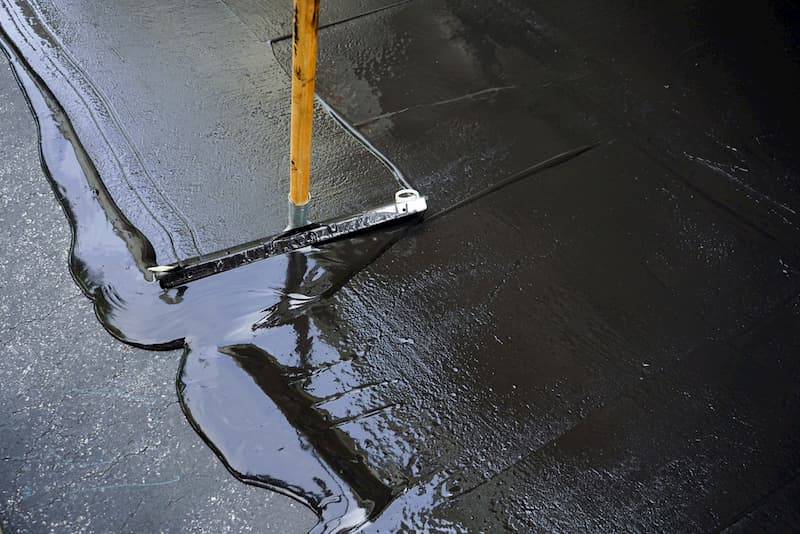Unlock the Secrets of Asphalt Sealing: Taking Full Advantage Of Warm Mix Asphalt Longevity
Unlock the Secrets of Asphalt Sealing: Taking Full Advantage Of Warm Mix Asphalt Longevity
Blog Article
Warm Mix Asphalt: A Lasting Option for Sidewalk
Hot Mix Asphalt (HMA) has emerged as a leading lasting selection for sidewalk solutions, providing a myriad of ecological advantages and cutting-edge technologies. As the need for environmentally friendly construction methods expands, checking out the subtleties of HMA's sustainability can supply useful insights into the future of sidewalk services.
Ecological Advantages of Warm Mix Asphalt

In Addition, Hot Mix Asphalt helps to alleviate metropolitan warm island impacts. Its dark shade absorbs sunshine, lowering the quantity of heat reflected back right into the ambience contrasted to lighter-colored sidewalks. This can decrease ambient temperatures in metropolitan areas, decreasing the need for cooling and ultimately lowering power usage.
In addition, Warm Mix Asphalt adds to boosted stormwater management. Its porous nature permits water to charge and infiltrate the sidewalk groundwater supplies, minimizing runoff and the danger of flooding. These ecological benefits make Hot Mix Asphalt a lasting selection for leading roadways and highways.
Energy Efficiency in HMA Manufacturing
Is power effectiveness a critical factor in the production of Warm Mix Asphalt (HMA)? Energy plays a substantial function in the production of HMA, affecting both expense and ecological sustainability. One key element of energy efficiency in HMA manufacturing is the use of warm mix asphalt (WMA) innovations.
Furthermore, advancements in plant technologies have resulted in more energy-efficient HMA production procedures. Modern plants are designed with functions like recycled asphalt pavement (RAP) handling capabilities, reliable burner systems, and improved insulation, all adding to energy cost savings. By optimizing power usage in HMA manufacturing, the market can lower its carbon footprint while keeping premium pavement materials. Energy effectiveness is, therefore, a critical consideration in making certain the sustainability of Hot Mix Asphalt manufacturing.
Recyclability of Warm Mix Asphalt
The recyclability of Hot Mix Asphalt (HMA) is a critical facet of its sustainability and lasting environmental impact. HMA is one of the most recycled materials in the USA, with over 100 million lots of reclaimed asphalt pavement (RAP) being recycled each year in brand-new pavement construction. Reusing HMA provides numerous ecological advantages, such as reducing the need for virgin materials, reducing power usage during production, and lowering the amount of waste sent out to landfills.
The process of reusing HMA entails grating the existing pavement, squashing it go to this website right into smaller sized items, and blending it with new accumulation and asphalt binder to develop a recycled mix. On the whole, the recyclability of HMA plays a significant role in advertising lasting practices within the sidewalk industry.

Long-Term Performance of HMA
Asphalt pavements demonstrate toughness and strength over a prolonged duration, mirroring the long-term efficiency of Hot Mix Asphalt (HMA) The long life of HMA can be connected to its capacity to endure hefty website traffic lots, harsh weather conditions, and the results of aging. Studies have actually shown that well-designed and properly created HMA sidewalks can last for twenty years or even more with regular maintenance. The trick to maximizing the lasting performance of HMA depends on using top notch materials, following ideal practices in construction, and executing efficient upkeep approaches. Appropriate drain, regular evaluations, and prompt repair services are vital for preserving the architectural stability of HMA sidewalks in time. Furthermore, developments in HMA modern technology, such as using polymer-modified binders and warm mix asphalt, have actually even more boosted the longevity and long life of HMA pavements. By focusing on high quality building and construction and upkeep methods, HMA remains to show itself as a affordable and sustainable service for lasting pavement facilities.

HMA: Durability and Sustainability
Showing both sturdiness and sustainability, Hot Mix Asphalt (HMA) has become a keystone in the building of long-lasting sidewalk facilities - regrading. HMA's longevity stems from its ability to endure hefty tons, harsh weather conditions, and high traffic quantities, making it a reliable option for highways, freeways, and airport terminal paths. The composition of HMA, which generally consists of accumulations, binder, and filler, plays an important duty in boosting its durability and resistance to wear and tear
Additionally, HMA's sustainability hinges on its recyclability and energy-efficient production process. The capability to reuse recovered asphalt pavement (RAP) in new HMA mixes decreases the view website demand for virgin materials and decreases the ecological effect of pavement building and construction and upkeep. In addition, the go to these guys power effectiveness of creating HMA hinges on its lower mixing temperature levels contrasted to various other pavement materials, resulting in reduced energy consumption and greenhouse gas discharges.
Verdict
In verdict, warm mix asphalt (HMA) provides a lasting remedy for pavement with its ecologically friendly features. HMA's recyclability, energy performance in manufacturing, and long-term longevity make it an eco-friendly option for roadway construction.
HMA is one of the most recycled products in the United States, with over 100 million bunches of redeemed asphalt pavement (RAP) being recycled annually in new sidewalk construction.The procedure of recycling HMA involves grating the existing pavement, squashing it into smaller sized pieces, and blending it with brand-new aggregate and asphalt binder to produce a recycled mix.Asphalt pavements show sturdiness and resilience over an extensive period, mirroring the long-term efficiency of Warm Mix Asphalt (HMA) Furthermore, improvements in HMA innovation, such as the usage of polymer-modified binders and warm mix asphalt, have actually even more boosted the longevity and durability of HMA pavements. The capability to recycle recovered asphalt sidewalk (RAP) in new HMA blends reduces the demand for virgin products and minimizes the environmental effect of sidewalk construction and upkeep.
Report this page